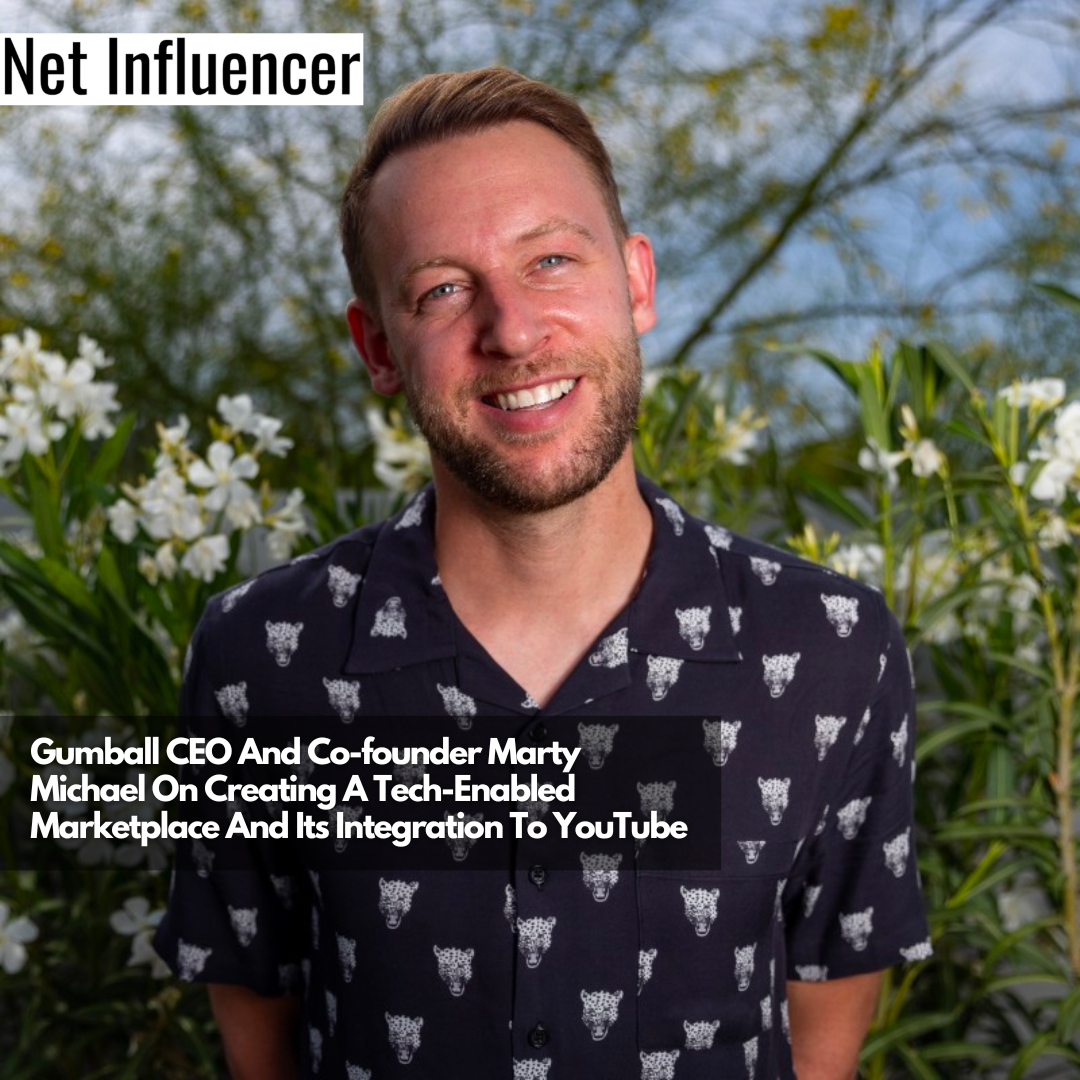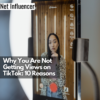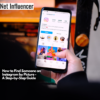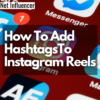Technology
Gumball CEO And Co-founder Marty Michael On Creating A Tech-Enabled Marketplace And Its Integration To YouTube
After seeing creators and advertisers going in circles when collaborating to create host-read ads, Marty knew that something had to change. From there, he built Gumball, a tech-enabled platform that automates processes — from advertisers looking for the best shows to creators receiving payments.
Marty Michael is the CEO and co-founder of Headgum and Gumball, a platform focused on connecting hosts of podcasts and YouTube channels with advertisers for host-read ads.
Rebranded from Headgum, the company was originally a podcast comedy network. It continues to operate today with 35 shows and 10 million monthly downloads.
One of the biggest issues Marty and his team ran into when they were scaling Headgum was the endless back and forth between creators and advertisers when it comes to host-read ads. This unit is preferred by the creators, advertisers, and audience and is better than radio-style ads that most people hear on podcasts.
Unless the team figured out a way to build a technology that allowed them to better automate the sales process, scaling would be a challenge. This motivated them to create Gumball, a tech-enabled marketplace that connects advertisers with podcasters.

On Gumball, advertisers can come in and see what shows are available and what inventory is available in real-time on those shows, add that available inventory to their cart, and check out using a credit card. This process creates a campaign.

Once the campaign is created, advertisers can upload their ad copy to Gumball, and it’ll be automatically relayed to the creator. After the creator makes their content, they can upload the ad to the platform for the advertiser to view. Gumball also handles the invoice and payout processes, making it an end-to-end solution for the sales process of host-read ads.
What inspired the decision to expand Gumball’s services to YouTube?
Gumball started in audio and did a great job of creating a product that the entire team was happy with. Moving into the YouTube space was the natural next step as the team is always looking for opportunities to share their learnings in the audio space and help creators on other platforms monetize their content. they’ve learned in the audio space and monetized with creators into other spaces and verticals.
Marty adds, “Podcasting has already bled into YouTube quite a bit. You have podcast creators who are releasing their audio on Spotify and Apple, but then they’ve also started using YouTube as a distribution platform. It’s actually the second largest listening platform for audio.”
Can you speak about the potential impact this expansion might have on the YouTube creator community?
Gumball is doing all of this to help creators monetize their videos in a way that’s a much lighter touch and easier to scale than the traditional way that creators have been working in this space. For example, creator-endorsed messaging involves heavy lifting for a month in order to create a video. Not to mention that this process takes multiple rounds of revisions and edits between the brand and the creator.
Gumball’s process is easier as it’s just a 60-second host-read ad, and creators get copy points from advertisers that tell them what they need to read. If brands aren’t happy with the first output, they go through one round of revision and then publish the ad.
Scalability is fast and possible with Gumball, too, because creators and brands can create host-read ads faster and easier, unlike bigger branded videos.
How does Gumball streamline the process of buying and selling host-read ads for YouTube creators?
For YouTube creators, Gumball sells an ad unit that’s easier for every side of the equation to create. There’s no huge lift required from the creator; they can just stick the 60-second ads into their regularly scheduled content.
It’s also easier for the brands because it’s a more straightforward process. They can simply tell the creators, “Here are the ten points we’d like you to hit, and here’s the coupon code that will help get users across the finish line to buy our products.”
How do you believe the YouTube integration will further democratize advertising for content creators of all types and genres?
Marty and his team have seen that the audio side of the business is similar to the video side, meaning traditionally, creators are repped by either small or large networks, managers, or agents. As a result, there’s a lot of human bias in the way things are sold.
Sales teams, agents, and managers will often float their biggest creators as it’s the easiest way to make the most amount of money. This is natural human bias, and if you don’t have the technology to scale past that, you won’t have enough time to sell multiple creators.
Gumball is democratizing the process by allowing brands to search a marketplace of creators on their own. They can see what shows match their specific search criteria, and they’re able to build a cart of perfect-fit creators regardless of audience size.
In short, Gumball’s open marketplace allows all creators equal exposure regardless of size and puts campaign curation in the buyer’s hand..
YouTube advertising can often be a complex and opaque process. How does Gumball aim to simplify this for both advertisers and content creators?
Gumball was created to solve the entire back-and-forth process traditionally done in Excel and emails by automating the entire interaction between creators and brands.
With Gumball, listing shows is as easy as adding an RSS feed or YouTube URL. The platform pulls information from the backend, helping creators get started with their profile page. After, the creator’s inventory gets listed, and advertisers can find it and add it to their cart.
Gumball also automates the video approval process — creators can get the copy points, and advertisers are able to give one round of revisions before the ad goes live.
Even the processes after that are automated in Gumball, including the invoicing and creator payouts.
What were some of the challenges you faced while developing this YouTube integration, and how did you overcome them?
One main issue Marty and his team faced was in podcasting, where there was no review process of the ads before they went live. Because of that, the team needed to build a video approval process to expand into the YouTube vertical.
Now, this feature exists on Gumball and is working really well. Marty shares, “That was one of the main things we had to adapt. The rest is very similar to what we’re doing in audio.”
What’s the difference between Gumball’s approach to podcasts and YouTube?
Marty cites that the education process is different between the two. There is a traditional mantra around building bigger, longer videos for brands.
Traditionally, creators opt to do ads that are bigger and more expensive, sort of like a one-time thing, to close one deal. Marty and his team had to educate creators on how Gumball works, how easy it is, and how scalable it is.
It’s different than podcasting because the format already existed, and everyone was already doing it. Marty explains, “So that was more like, ‘All right. This is the scalable solution,’ rather than, ‘Why is this unit better than what you’re doing already?'”
Could you describe the benefits of “on-screen” host video integration for advertisers?
For Marty, it’s as simple as being the most preferred ad unit by every side of the equation: the advertisers, creators, and, ultimately, the audience. According to Marty, the audience that watches and listens to podcasts like this type of ad as others are more intrusive and not in tune with the content.
Can you share any success stories or highlights from Gumball’s beta testing with YouTube channels?
When Gumball started with YouTube, they had zero YouTube creators. Today, there are close to a hundred on the platform after six months. Marty believes that the storytelling of what they’re doing and the way they’ve been able to bring on creators is a testament to how the integration resonates with the community.
What was the feedback from creators who participated in Gumball’s beta testing?
Gumball has received positive feedback during its beta testing. Creators highlighted Gumball’s ease of use and how they can monetize faster and easier using the platform. The turnaround has been faster than it was for the more complex integrations creators were previously doing.
How does Gumball help advertisers discover and collaborate with top YouTube talent?
Traditionally, brands would have to find a YouTube channel that they like. They’d have to figure out who’s representing that YouTube channel and work backward from the creator’s standpoint to figure out how to get an ad on that show.
Gumball provides enough scale for these advertisers to look for a specific show and work the correct way. They can use Gumball’s search tool and enter the audience demographic they’re looking for. Whether that audience is aged 18 to 34 or mostly male or female, Gumball will filter shows instantly, and advertisers can see which creators best fit their campaign goals before adding real-time available inventory to their cart. Marty says, “The top-down approach is much easier for the brand than the more traditional way of working backward.”
Can you elaborate on the Share of Voice and Brand Category Exclusivity Control features available for advertisers?
The shows themselves determine how many ad spots they list on a given episode, so the Share of Voice depends on how many ads advertisers want to book per episode. Currently, video creators are listing one or two spots per episode, which means advertisers are either getting a 100% or 50% share of voice, depending on if both ad slots get sold. In podcasting, the Share of Voice usually ranges from 33% to 20%.
As for the Brand Category Exclusivity Control, Marty shares that the team designed it based on everything they learned in podcasting. In podcasting, many brands require category exclusivity to avoid placement next to competitors. Simply put: it devalues the host-endorsed ad if a creator is saying, “My favorite brand is Leesa,” followed by “My favorite brand is Helix,” the next second. This devalues trust and creates a bad user experience.
Before brands begin building their campaign, Gumball requires brand category input. For instance, brands will say, “I’m a mattress company.” Gumball automatically excludes that brand from seeing available inventories at any given show or weekend, which another mattress company has already purchased. The same happens to the YouTube side.
Through this feature, Gumball ensures that no competing brands can buy space in the same episode. And because the entire process is built into the system and is automated, brands won’t have the option to purchase that week’s inventory when another competitive brand already did.
How does Gumball’s LightningPay feature improve the payment process for YouTubers?
One of the biggest pain points Marty and his team heard from creators is that it takes too long to get paid for the ads that they’re doing. Marty shares, “And that’s true. I wish that it wasn’t the way that it is, but at the end of the month, we invoice the brand, and it takes 90 to 120 days to get paid on those invoices.”
With LightningPay, creators don’t have to wait for when they’re going to get paid. They’ll know they’ll get paid the moment that their campaign is complete and can continue to focus on creating their art rather than worried about monetization. Gumball tracks campaign completion utilizing Gumshoe, tracking built specifically for the platform.
Can you talk about some of the biggest brands that Gumball supports and how they might benefit from this YouTube integration?
There have been a few very active brands in the podcast space that are moving over to the YouTube space. One of the traditional brands is Athletic Greens, and the bigger brands include Netflix. “We’ve seen a lot of really fun, different show campaigns that have come through the platform, but there are literally 200+ active campaigns on the platform,” Marty shares.
How do you envision the future of host-read and on-screen ad integrations in the digital advertising space?
Gumball is keeping an eye on AI as that development seems to be a very hot subject. Marty thinks they can do a lot of things in audio, like synthesize ads instantly.
Marty shares that Gumball is currently working on different product ideas. They’re working on something for pre-sale, ads, and post-sale, and they will use AI to help them build these products more efficiently and effectively.
What kind of impact has Gumball had on the podcast advertising space since its launch in 2020, and how do you expect it to influence the YouTube advertising landscape?
What Gumball does best is providing a home and a space for the middle section of both industries and verticals to monetize effectively.
The top 1% has a comfortable home; meaning shows that pull in the largest audience and sit at high places like iHeart and Spotify. These are large corporations that have a seat at the table to get their shows in front of the biggest brands that iHeart or Spotify is talking to. Everyone else below that doesn’t have a fair seat at the table.
Gumball democratizes the process, gives everyone a fair seat, and floats them to brands coming in and searching for shows like theirs. Marty believes that this is the reason why Gumball did so well in podcasting and well do so well in YouTube.
How is Gumball addressing the needs of niche markets, like the watch-loving audience of Theo and Harris?
These shows had a hard time getting in front of brands before joining Gumball and have gone a long way after being part of the platform. Marty explains, “I’m really proud of what the tech has been able to do for the shows, like Theo and Harris. We’ve already had ads run on their show after being on the platform for less than two months.”
What advice would you give to YouTube creators or brands who are considering using Gumball’s services for the first time?
Since Gumball is based on a revenue share, no risks are involved when creators or brands join the platform. Gumball only makes money when they sell ads on shows. They work with many exclusive contracts and some non-exclusives, encouraging brands and creators to give Gumball a fair shot and see what they can do for channels and shows.
What are your future plans for Gumball? Are there any other platforms you’re looking to integrate with?
Gumball will focus on longer-form content. They’re always monitoring the format changes supported in social media platforms, like TikTok, and continue to make sure that they’re helping creators in any space where they feel a 60-second host-read ad can exist.
Marty shares that integrating Gumball into Twitch and reels is already on their timeline and agenda, but they will still have to look into the traction they’re getting in their current verticals. Expanding further is definitely part of Gumball’s long-term plans.



















